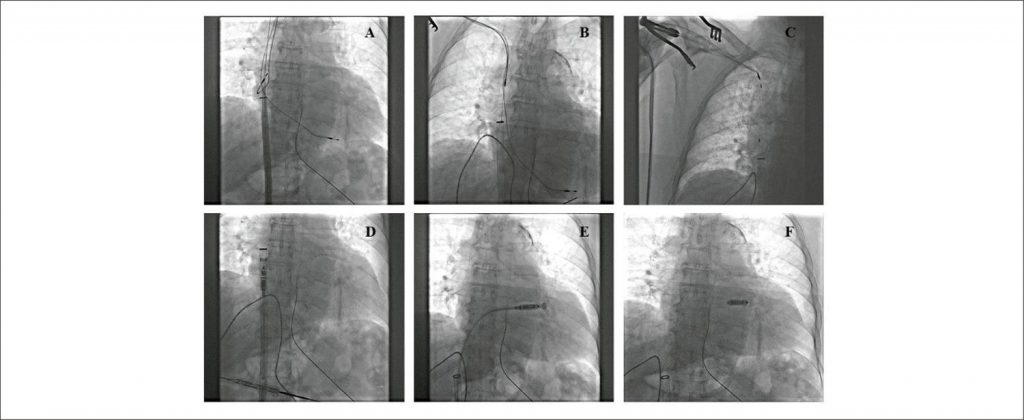Arq. Bras. Cardiol. 2023; 120(2): e20220091
A Hybrid Approach of Simultaneous Extraction and Leadless Pacemaker Implantation in a Transvenous Lead Endocarditis Case
Introduction
Symptomatic bradycardia treatment is based on the transvenous method of endocardial pacing. However, cardiac electronic implantable devices (CEID) are associated with a potential risk of complications, including infections, with an estimated rate of 0.5% with primary implants and 1–7 % with secondary interventions. CIED infections are associated with longer hospital length of stay, higher clinical costs and mortality rates. , According to guidelines, infective endocarditis related to CIED implicates complete removal of the system, followed by a period without intravascular therapy. – Nevertheless, most of the patients require CIED reimplantation, which is known to be associated with a risk of reinfection between 2 and 11%, particularly in cases with only partial removal of the initial device.
The PISA technique is a percutaneous procedure used with success in lead extraction of the CIED. This technique starts with the identification of the proximal portion of the lead. Then, a debridement is performed along the lead to achieve the site of venous insertion. Subsequently, a polypropylene dilator sheath is inserted and advanced externally up to the lead in rotational movements, while maintaining a light traction. Such movements will cause the release of adhesions around the lead, allowing, after the full advancement of the sheath, the entire lead removal.
[…]
677

